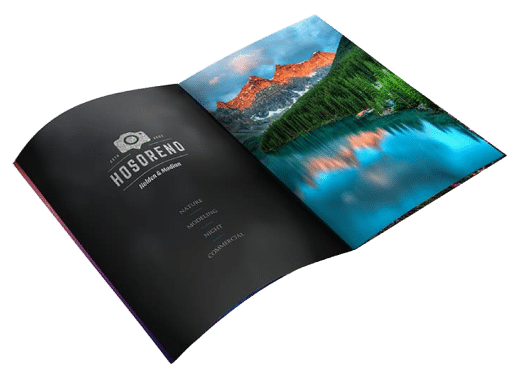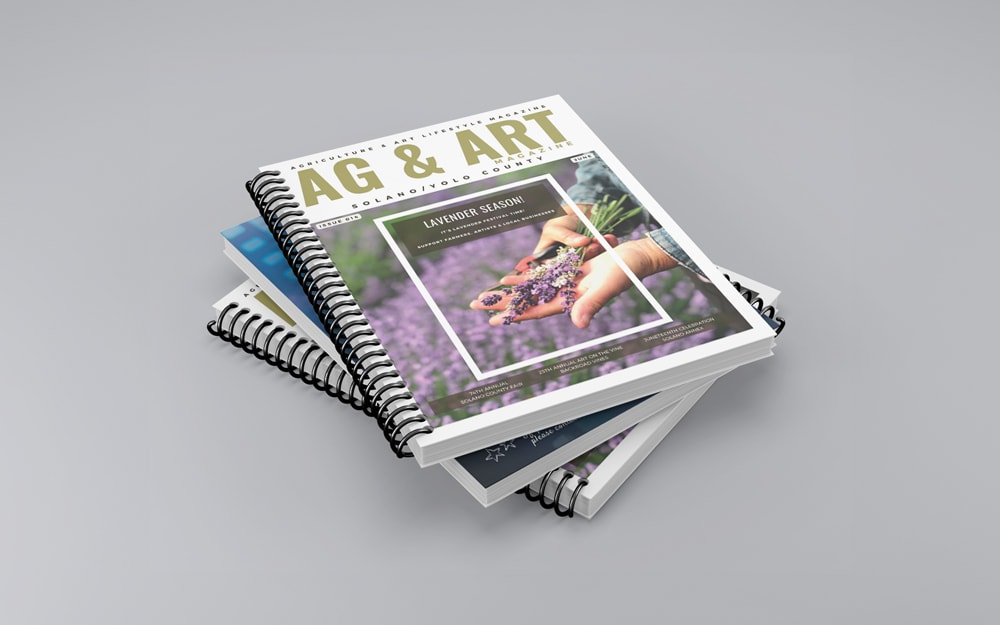Why More Companies Are Turning to Local Booklet Printing Services
Why More Companies Are Turning to Local Booklet Printing Services
Blog Article
The Crucial Guide to Understanding Booklet Printing Options and Techniques
The process of pamphlet printing involves numerous considerations that can greatly impact the final item. From selecting the proper style and dimension to comprehending the subtleties of binding approaches, each choice plays an essential function. In addition, elements such as paper supply and printing strategies further affect the efficiency of the pamphlet. As one navigates these choices, it ends up being necessary to grasp just how they adjoin and what that implies for the overall result.
Comprehending Pamphlet Styles and Sizes
When taking into consideration pamphlet printing, recognizing the numerous styles and sizes readily available is essential for accomplishing the desired presentation. Booklets can be generated in various layouts, consisting of saddle-stitched, spiral-bound, and perfect-bound, each offering distinctive benefits. Usual dimensions range from common letter (8.5 x 11 inches) to smaller sized options like A5 (5.8 x 8.3 inches), permitting flexibility based on content and target audience.Selecting the appropriate size can affect both the layout and reader interaction. Bigger dimensions may suit visually driven material, while smaller layouts might be extra easy to use and portable. In addition, the variety of web pages affects the option of binding method, as thicker brochures might need sturdier bindings. Ultimately, recognizing these aspects permits for a much more customized strategy, ensuring that the end product straightens with the designated message and aesthetic, boosting the overall effectiveness of the interaction.
Choosing the Right Paper Supply

Binding Methods: Considerations and choices
When it comes to binding methods for pamphlets, several choices are available, each with distinct benefits. Saddle stitch binding offers a cost-efficient service for thinner pamphlets, while perfect binding techniques provide a more refined try to find thicker publications. Wire-O binding attracts attention for its toughness and convenience of use, making it excellent for documents that call for versatility.
Saddle Stitch Binding
Saddle stitch binding supplies a functional and cost-efficient option for constructing pamphlets, making it a popular option amongst publishers and companies. This binding approach involves folding sheets of paper in fifty percent and stapling them along the fold line, developing a cool and orderly look. Usually ideal for pamphlets with a lower page matter, saddle sewing is optimal for publications, sales brochures, and instructional products. The simplicity of this method permits quick manufacturing and is frequently favored for brief runs or promotional things. However, it is necessary to note that saddle stitch binding may not be suitable for thicker pamphlets, as the back might not stand up under boosted weight. Overall, it remains a reputable alternative for several printing tasks.
Perfect Binding Methods
Perfect binding is a commonly made use of strategy that offers a refined and specialist coating to magazines and booklets. This method includes gluing the pages together at the spine utilizing a solid adhesive, permitting a tidy side and the ability to hold a bigger variety of pages contrasted to saddle sewing. Perfect binding is specifically ideal for thicker pamphlets, such as directories and annual reports, where a sturdy, level spinal column is preferred. Additionally, it offers the alternative for a printed cover that can be made to improve aesthetic appeal. Factors to consider such as web page matter, paper weight, and the planned usage of the pamphlet ought to be taken into account, as they can impact durability and total quality.
Wire-O Binding Choices
Wire-O binding, recognized for its toughness and versatility, provides an outstanding choice for brochures that require easy web page turning and an expert appearance. This binding approach employs a series of steel loopholes that hold pages firmly, enabling them to lie flat when open. It is specifically appropriate for handbooks, magazines, and discussions due to its durable nature. Wire-O binding is available in different colors and diameters, fitting various web page counts and thicknesses. In addition, it permits the incorporation of covers and tabs, enhancing the brochure's general visual. Factors to consider for Wire-O binding include the option of cord shade, the dimension of the loops, and the level of personalization preferred, all of which can greatly affect the end product's appearance and capability.
Digital vs. Offset Printing: Which Is Best for You?
When choosing a printing method for pamphlets, comprehending the distinctions between electronic and counter printing is important. Digital printing makes use of contemporary innovation to create high-grade prints quickly and cost effectively, making it perfect for brief runs or jobs requiring fast turn-around times. It enables modification, giving the ability to print on-demand with marginal waste.In comparison, balance out printing is a standard technique that excels in producing big amounts with regular top quality. It entails transferring ink from a plate to a rubber covering, after that to the paper, which results in dynamic colors and specific information. Offset printing generally requires longer arrangement times and is much more affordable for bigger volumes.Ultimately, the option between electronic and balance out printing depends on task demands, spending plan, and desired amount. For little, time-sensitive jobs, digital could be the best option, while balanced out might be why not try this out more suitable for bigger, top notch productions.

Creating Your Booklet: Tips and Ideal Practices
When making a brochure, careful focus to format, font style option, and color use can considerably boost its efficiency. A well-structured layout guides the visitor's eye, while appropriate typefaces ensure readability and communicate the desired tone. Furthermore, reliable use of color can stimulate feelings and emphasize key information, making the overall layout extra impactful.
Picking the Right Layout
How can one successfully choose the appropriate design for a pamphlet? First, it is vital to examine the pamphlet's function and target audience. A tidy, organized design enhances readability and involvement. Making use of a grid system can aid in aligning aspects regularly, producing a professional look. Furthermore, integrating aesthetic hierarchy with differing sizes and positionings of images and text can guide the reader's eye and highlight essential info. It is additionally vital to leave adequate white room, which avoids congestion and permits far better focus. Ultimately, evaluating various designs via mock-ups can give understanding right into exactly how the layout does in real-world scenarios, ensuring that the end product meets both functional and aesthetic requirements.
Picking Suitable Font Styles
A well-chosen font can significantly enhance the general layout of a booklet, complementing the format and strengthening the web content's message. The selection of typefaces should take into consideration readability, especially for body message, as it ensures the information is accessible to all visitors. Sans-serif typefaces are usually favored for electronic layouts, while serif font styles can lend a typical feeling in printed products. It's advisable to restrict font selections to 2 or 3 to keep aesthetic coherence. In addition, font style size plays an important duty; headings ought to be distinct yet not overwhelming, while body message ought to be comfy for reading. When choosing fonts, placement with the pamphlet's theme and target market is necessary for reliable communication and visual appeal.
Effective Use Color
Shade serves as an effective device in booklet design, assisting and forming perceptions visitor feelings. It can stimulate sensations of calmness, trust fund, or enjoyment, depending upon the hues selected. Designers ought to consider shade concept concepts, making certain that the selected combination aligns with the brochure's message and target market. For example, making use of cozy shades like red and orange can develop urgency, while cooler tones like blue and environment-friendly foster tranquility.Additionally, comparison plays a crucial function; complementary colors can boost readability and aesthetic appeal. Uniformity in shade usage throughout web pages further strengthens brand name identity and communication. Inevitably, reliable shade implementation not just records focus but likewise strengthens the pamphlet's objective, making it a necessary aspect of successful design.
Completing Touches: Coatings and Unique Effects
While many consider the material and design of a booklet the most essential elements, the ending up touches, such as finishes and special effects, play a crucial function in boosting its link overall appeal. Coatings can offer protection and toughness, ensuring that the pamphlet stands up to deterioration. Matte surfaces offer a sophisticated, non-reflective surface, while glossy layers can make colors show up even more captivating and lively. Special impacts, like embossing or foil stamping, add a tactile dimension that can develop a memorable impact. These methods can highlight specific locations, attracting focus to crucial info or creating aesthetic rate of interest. Furthermore, UV layer can give a high-shine coating that raises the total look.Together, these finishing touches not just improve the pamphlet's visual yet additionally communicate expertise and focus to information, inevitably leaving a lasting influence on the reader.
Cost Considerations for Booklet Printing
Understanding the various expense factors to consider for pamphlet printing is essential for companies and services aiming to maximize their spending plans. Key elements affecting expenses consist of the option of paper, binding, and ink techniques. Greater quality materials, such as exceptional paper or specialized inks, usually enhance the overall cost. Furthermore, the size and page count of the booklet play a considerable function; larger brochures need more sources and time to produce.Another vital factor to consider is the printing method, whether electronic or balanced out, as each has its own rates framework and viability for different amounts. Businesses must likewise consider design prices, which can vary based upon complexity and making use of expert solutions. Inevitably, delivery and handling charges can include in the overall, especially for huge orders. By reviewing these elements, organizations can make enlightened choices that align with their economic capabilities while accomplishing the wanted top quality in their printed products.
Regularly Asked Inquiries
What Are the Ecological Impacts of Pamphlet Printing?
The ecological effects of brochure printing consist of logging from paper production, carbon discharges from transportation, and waste generation from discarded products - Booklet Printing. Lasting methods, such as making use of recycled paper and environment-friendly inks, can alleviate these results
How Can I Make Sure Color Precision in My Pamphlet?
To guarantee shade accuracy in a brochure, one ought to make use of calibrated screens, use specialist color accounts, perform examination prints, and choose top notch printing solutions that provide color matching and proofing website link alternatives for finest results.
What Is the Regular Turn-around Time for Pamphlet Printing?
The common turnaround time for pamphlet printing varies depending on the complexity and amount - Booklet Printing. Usually, it ranges from a few days to two weeks, affected by variables such as publishing approaches and finishing requirements
Exist Minimum Order Quantities for Pamphlet Printing?

Can I Print Booklets in Numerous Languages?
Publishing booklets in numerous languages is feasible. Lots of printing solutions offer choices for bilingual or multilingual layouts, allowing for effective communication. Cautious preparation guarantees that develop elements suit numerous languages without jeopardizing readability or appearances. In addition, aspects such as paper stock and printing methods additional affect the effectiveness of the pamphlet. When thinking about brochure printing, comprehending the different styles and dimensions available is crucial for achieving the desired discussion. When choosing a printing approach for pamphlets, comprehending the differences between electronic and counter printing is necessary. In addition, the dimension and page count of the booklet play a considerable role; larger pamphlets require more sources and time to produce.Another important factor to consider is the printing technique, whether electronic or countered, as each has its very own pricing structure and viability for different amounts. The ecological influences of brochure printing include deforestation from paper production, carbon discharges from transportation, and waste generation from thrown out materials.
Report this page